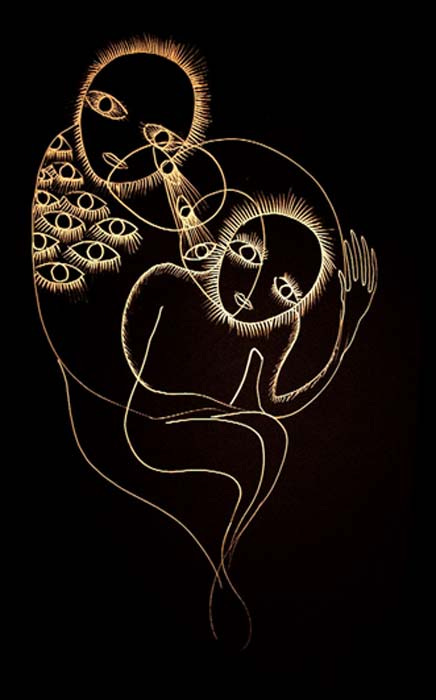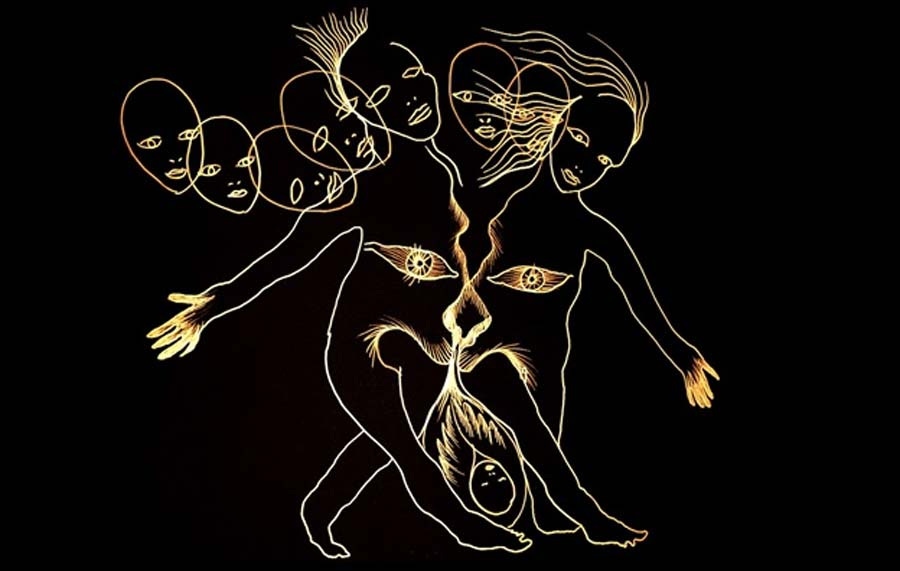The Controversy Surrounding Witches’ Familiars and Religious Judgement
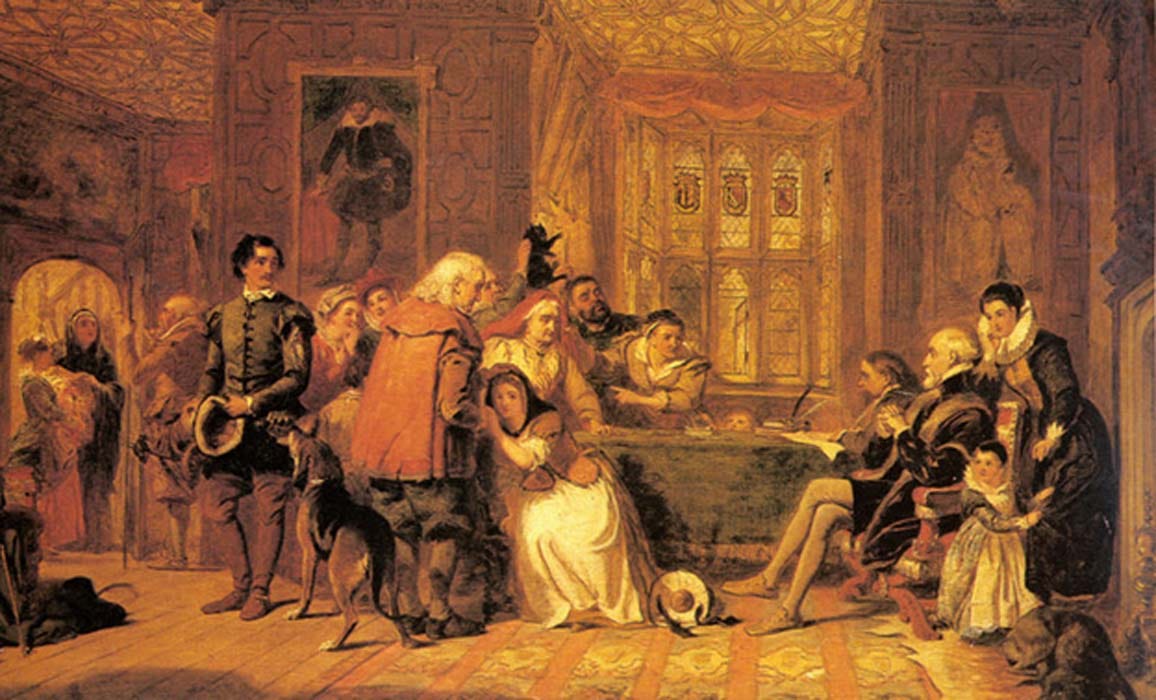
In the shadowed annals of Judeo-Christian history lies a profound paradox: biblical icons like Jesus and Mary are exalted for their intimate dialogues with angels and spirits, celebrated as divine communion, while witches conferring with familiar spirits faced condemnation, torture, and execution as heretics damned to eternal perdition. Rooted in scriptures like Leviticus that decree death for those with "ghosts or familiar spirits," this double standard has spilled rivers of blood, yet overlooks how Abraham gifted his concubines' sons the power to consult "unclean" demons for humanity's counsel, how Solomon enlisted demonic aid to build his temple, and how magi from the east - masters of astrology and sorcery - honored Christ's birth.
This article peels back layers of mistranslation, symbolism, and ignorance to question why "uncleanness"—remedied by a simple ritual bath—was twisted into evil, challenging us to reconsider the fine line between holy guidance and forbidden magic that has shaped, and scarred, human belief.
Sacred Spirits and Forbidden Familiars
The Judeo-Christian religions have historically harshly judged and condemned witches who have familiar spirits, practice idolatry, and prophesy. These condemnations have spilled the blood of far too many pagans to count. Though these religions have sometimes espoused and practiced tolerance, witches who kept familiars were not given grace and forgiven and were mostly put to death. Due to some passages in the Bible, it is believed by many that a witch actually loses her soul and is damned if she practices divination or consults the spirits of the dead. As Leviticus 20:27 states:
“A man or a woman who has a ghost or a familiar spirit shall be put to death; they shall be pelted with stones - their bloodguilt shall be upon them.”
Controversy exists regarding the double standards applied by religious dogmas. Although the Catholic Church staunchly reprimands necromancy practiced by witches, Roman Catholic altars contain the remains of saints, called relics and the entire cathedral of St. Peter in Rome is built upon, and calls upon, the dead buried underneath it, as it is constructed on top of a grave mound.
Children of the East
In Judaism, only one form of forgiveness is given to the idolaters and diviners who speak with familiar spirits, and it is given to a special group. A fascinating story of an acceptance of the use of familiar spirits is told in archaic versions of the tale of Abraham. An obscure passage tells of a ‘gift’ that Abraham gave to the sons of his concubines. These illegitimate sons and their descendants, referred to as the children of the east, were given the ability to speak with demons and have relations with familiar spirits. These spirits were to be used to counsel humanity; as a result, the witches who used these powers were forgiven by God because, though they were utilizing unclean spirits, they did so to assist others, as described in Genesis 25:6:
“Now Abraham gave all that he had to Isaac; but to the sons of his concubines, Abraham gave gifts while he was still living, and sent them away from his son Isaac eastward, to the land of the east.”
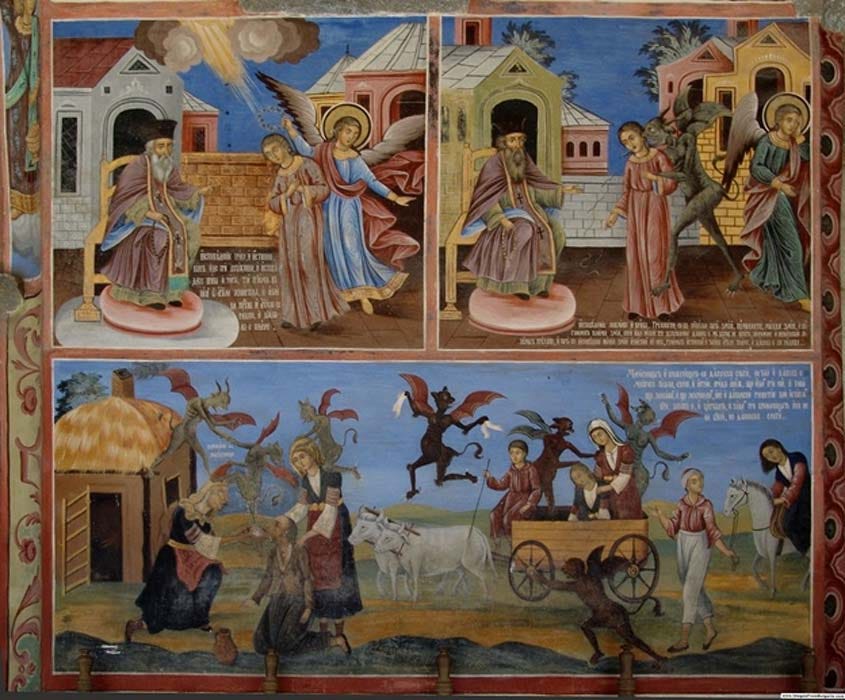
The actual Hebrew word used for the gifts was tumah, and it was said he gave them that name to use for themselves. Tumah is commonly translated as the name of the unclean spirits or impure demons - that is, familiar spirits. According to The Encyclopedia of Jewish Myth, Magic and Mysticism:
“Names of impurity Shemot Tumah, a mysterious power that the Talmud reports Abraham bequeathed to the gentile children of his concubines. The concept may have its roots in Zechariah 13:2, where the impurity of the land derives from the names of idols. These children of Abraham became the fabled children of the east, the masters of magic and astrology. This story is offered as an explanation for why non-Jews are able to perform efficacious magic. Rashi identifies shemot tumah as knowledge of witchcraft and demonology. Later sages relate this term to some of the techniques used in exorcism”.
Unclean Practices
In a Hebraic context, this can mean a spirit of the dead: one of the ways someone can become ‘unclean’ is through working with or touching the dead. So technically, this can refer to, for example, washing and dressing a corpse, burying a corpse, and worship of dead ancestors. In many cases in older Jewish literature, the connotation of uncleanliness or impurity in no way indicated that people could not engage with the dead; proper protocols for handling the dead were simply being indicated. The judgment of evil was imposed upon these practices at a later time through mistranslation and misunderstanding. Through a deeper understanding of the wording used by the Hebrews, one can see how the belief of many Jewish and Christian followers that conferring with the spirits of the dead is ‘evil’ could have just been a misunderstanding of this concept of ‘unclean’. All women who are menstruating are also considered unclean - another example of how this thinking must not be taken to extremes to judge perfectly natural occurrences, whether menstruation or death, as evil and taboo. That is all human error and ignorance, not religious dogma.
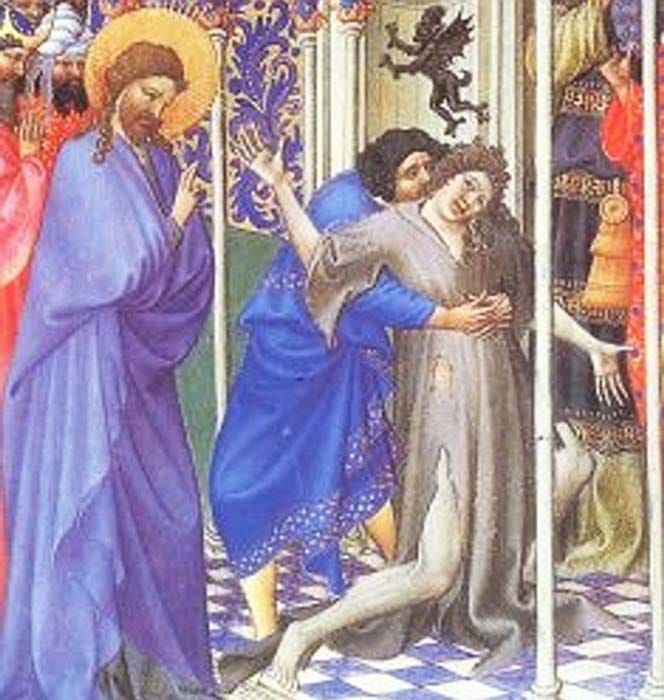
Also, if one had the misfortune of becoming unclean, it was fairly simple to remedy; all one needed to do was take a ritual bath. Far from the extreme judgment and defilement attributed to these practices, a simple baptism provided a cure-all for the state of evil imposed through all these familiar spirits in the ancient Jewish and Christian texts, at least. So, it begs to question, why all the fuss over something easily removed by a simple bath?
The children of the east reference is specific in Judaism and refers also to the sorcerers and magi. Wise men were called by this name, and they too conferred with familiar spirits all the time. In the story of the birth of Christ the three magi, or wise men, are said to have come from the east. Without more of a context, many do not know what this is referring to. According to the old Jewish texts, as elucidated in the Zohar, the east is a place of magic and witchcraft:
“land of the East—domain of . . . impure witchcraft. The East is famous as a realm of astrology and magic. In the mountains of the East dwell those who teach witchcraft . . . Chief among them Uzza and Azael—two angels who opposed the creation of Adam and Eve, fell from heaven, and were attracted by the daughters of men. They were punished by being bound in chains of iron in the mountains of darkness, from where they still manage to wreak havoc, teaching sorcery to humans.”

Angelic Supernatural Guidance
It was thought that these angels acted as familiar spirits to those who practiced divination and gave them instructions on how to gain superpowers and magical abilities, and in later Jewish works, these spirits were considered beneficial. Solomon himself, known as the wisest man to have walked Earth, utilized the aid of demons and familiar spirits in order to build the Temple, after all, so there must be some means of attrition for the usage of unclean spirits in all respects, as there are exceptions to the rule found throughout Jewish history. One can see enveloped within many of popular mythologies the presence of these others. Adam had a ministering angel, called Raziel, who gave him the book of life known as the Sefer Raziel (Book of Raziel), which contained all the information he would need to know.
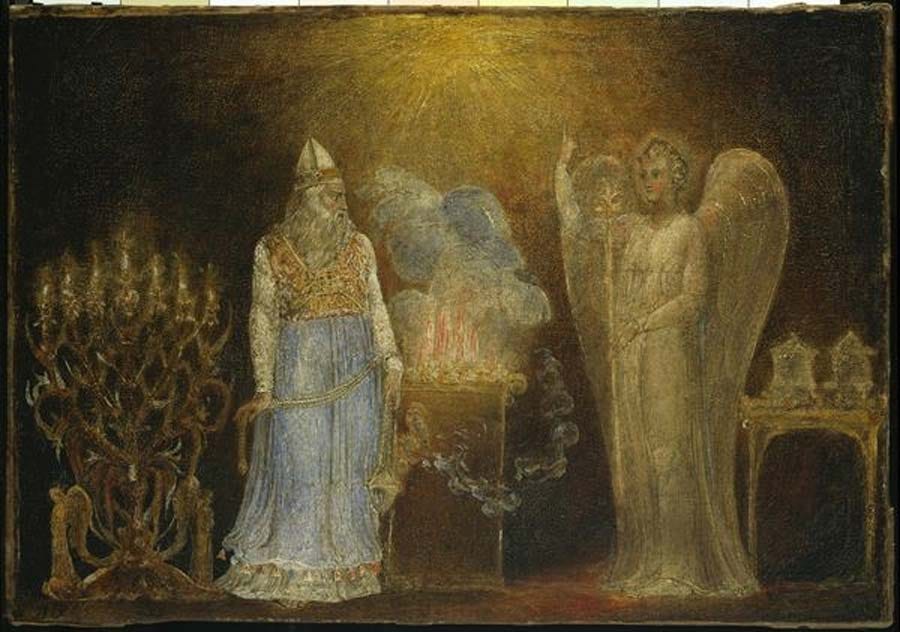
When Moses ascended to heaven, it was the angels who guided him and later instructed him on how to remake the tablets he broke upon his knee. When viewed through a different lens, one can see that most of the religious figures were in fact guided by some kind of spirit, be it called angel, God, the Holy Spirit, or whatever popular nomenclature one wishes to use. So, why would these be distinguished so judgmentally from the familiar spirits of the witches?
Despite all the many warnings against conferring with familiar spirits and how doing so has been denigrated in some religions, the benefits can hardly be denied, at least from the perspective of many ancient origin stories and myths. Regardless of whether or not one believes in familiar spirits, according to historical accounts, the information and powers they are reported to have conferred advanced human civilization by quantum leaps, if there is any truth to these stories.
The Gift of Language
Some religious texts state that familiar spirits have no worthy information to confer to humanity, but in the majority of origin tales, all areas of knowledge and expertise—language, agriculture, science, astronomy, fine art, music, and architecture—came to the human race via familiar spirits and genius daimon guardians. These spirits, whether angels, aliens, rishis, or fairies, inspired modern civilization.
The supernatural source of something such as language, for example, often takes the form of an angel-like creature or spirit who comes from either the stars, the sea, or from underground. The Chinese language was given to the serpent man Fu Xi by a unicorn (or kirin); the Greek language was given to Hermes by a giant serpent named Poimanderes. In Africa, language came from the fish people from the dog star Sirius; the Native Americans procured their language from the Horned River snakes. The factor that is consistent in all these tales of incredible knowledge or ideas coming to humanity is that usually some kind of guiding force with a discernible form directed the human mind to the realization of it. Many humans who have received an epiphany - an original idea or a song - have described these kinds of experiences in great detail and sometimes credit a muse.
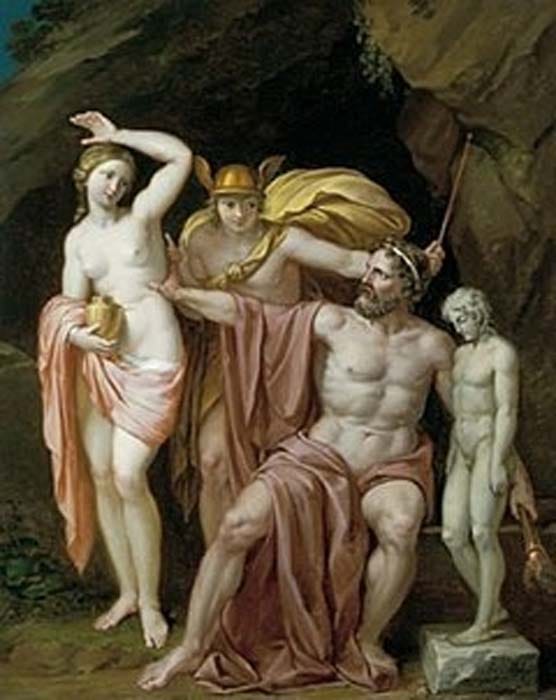
Symbolism of Prometheus’ Gift and Pandora’s Box
These stories of humanity gaining knowledge from another source also mimic the Prometheus myth. In this myth, humans are missing something that must be procured or stolen from the gods. Prometheus, a Titan, defies the gods by stealing fire and giving it to humans. Rather than literal fire, this could be interpreted as creative fire or light, the ability to create or conceive of new thoughts from out of nowhere—a priori knowledge, as the philosopher Kant names it.
Many are familiar with the Prometheus myth and know about Pandora’s box, but may be unaware of the deeper role that Pandora plays or the significance of the box. Many scholars say that Pandora’s box was much like the pithos jar described earlier, both a womb and a tomb, but also that this jar was literally Pandora’s womb. Robert Meagher, humanities professor at Hampshire College, explains the connections between the pithos and the story of Pandora:
“A pithos is a jar that is womb-like in shape and is a symbol for the earth, the mother of all. The implications of the pithos to the story of Pandora are obvious. Pandora’s gifts are released from her own womb. Her fault lies not in her curiosity, but in her being. She is constitutionally deceptive and lethal because she draws men into her pithos, and brings new men forth for a life of misery.”
The image of Woman as a pithos is extremely ancient. In many ancient Helladic burials, the pithos was used as a coffin. The deceased was placed inside in a fetal position, covered with honey, and buried in the hope of new life and regeneration.
The symbolism of the concubine, or surrogate, is that they offer their womb up in a sacrificial manner, and perhaps the concubines of Abraham were offering their wombs up to more than just human children but to some kind of spiritual function. If one views the story as symbolic instead of literal, there is certainly congruency happening in many of these familiar tales, with women and their wombs somehow forming a relationship with something supernatural.
When one considers the celibacy practices of witches who engage the familiar spirit, this becomes very intriguing. If one views the complete story of Prometheus one sees that one possible interpretation is that a creative ability is placed within the womb of Pandora from a heavenly, or supernatural, source. This creative ability is easy to interpret as the ability to reproduce, but what if there is also some other strange mystery contained within the tale that is also getting at the practices of women in ancient times of reserving their wombs for the gods, as in the belly-talkers.
The story of Mary’s interactions with the Holy Spirit also involved angelic entities; the angel Gabriel came to her before the Holy Spirit paid her a visit to inform her of what was going to happen. Given that Mary is a virgin, this suggests some kind of relationship between the libido and the attraction of the familiar spirit because, according to the story, Mary was a virgin, like the vestal virgins of Rome, who existed long before Mary met up with the Holy Spirit. For those unaware of the whole history of belly-talkers and women being impregnated by angels, this story of Mary and the Holy Spirit might seem like a one-off, until one becomes aware of the long history of manuscripts dating into antiquity containing this same tale.
Based on an excerpt of the book Familiars in Witchcraft by author Maja D’Aoust
By Maja D’Aoust
References
D’Aoust, M. 2019. Familiars in Witchcraft. Inner Traditions, Bear & Co
Dennis, G.W. 2007. Encyclopedia of Jewish Myth, Magic and Mysticism. Llewellyn Publications
Matt, D. 2018. Zohar, Stanford University Press
Meagher, R.E. 1995. Helen: Myth, Legend, and the Culture of Misogyny. Continuum


